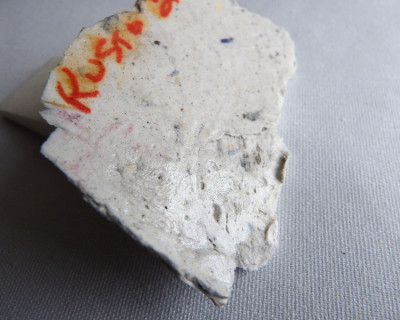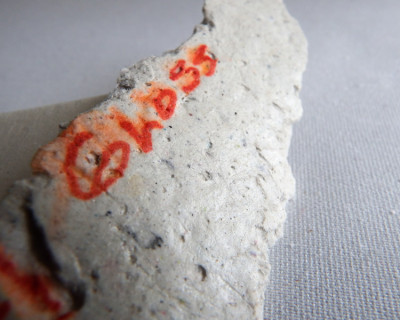
There have been shelves full of decorative papier maché clay bowls just waiting for the weather to be warm enough to spray a finish on them. The time has finally come!
To make sure any finish worked well before I use it on the bowl that I’ve put time and effort into, some testing seemed like a reasonable idea.
The spray finishes were some I already had from other projects and wanted to make sure wouldn’t do something funky to the surface, like discolor it or react strangely (bubbles, stickiness, etc.)
I also have a few bowls with a white painted surface, so I wanted to make sure they’d stay white.
What Was Tested
The sprays were Krylon UV-Resistant Acrylic Coating in gloss and matte finishes, Rustoleum 2X Ultra Cover Gloss Clear and some Ace Hardware polyurethane spray varnish.
All but the polyurethane claim to be non-yellowing, but you’ll see that’s a stretch.
For some reason, I overlooked a can of Krylon “Crystal Clear” (clearer than clear?) in a satin finish, so there’ll be a follow-up to this, and I’m pinning my hopes on it.
How It Was Tested
Uncoated Papier Maché Clay
Whenever there are any leftovers from a batch of papier maché clay, I make a test sheet. I spread it on cereal box liner plastic and put more liner plastic on top, pressing a bit to straighten it out as much as possible.
Then the top liner comes off to dry the sheet. It curls some or gets wavy as it dries, but that’s not an issue for the testing. There were some smaller chips lying around, so I used those, since each finish could be tested individually, without having to mask the others off.

The Krylon matte finish is fairly indistinguishable from the unfinished dried clay.
It’s hard to tell if it’s coating at all, at first. That’s perfect, if you want to keep the raw look, but give it some protection from moisture and a little more strength.
So this gets a thumbs-up for most purposes when you want a matte finish.
Both the Krylon gloss and Rustoleum finishes were very glossy with two coats. You can compare them in the slideshow below. The gloss doesn’t “read” very well in the photos, but they were equally glossy.
That gives the Krylon spray the winning edge, in my opinion, since the Rustoleum was yellower (also easier to see in person).
Lessons Learned
Krylon is the (tentative) winner (for some bowls)
Both the matte and the gloss gave finishes you’d expect from their label, but only if a slight yellowing won’t be noticeable. I’d use either one of these on the unfinished gray surface or over a paper or painted coat of a dark to medium color.
It’s not over yet.
At this point, the quest for a non-yellowing finish hasn’t reached an end. The follow-up testing with the Krylon “crystal clear” is the only hope for what’s in stock here. If that isn’t acceptable, more research is on the agenda.
Alcohol inks
After seeing what the sprays did to the Sharpie markings, I’d be really hesitant to use alcohol inks as a surface decoration, until I find something that doesn’t dissolve them. I assume I’ll need something water-based.
Liquitex Matte Medium and Gloss Varnish work well for collaging anything to the surface of the bowls, but the Matte Medium specifically says on the label not to use it “as a final varnish”. Maybe it could be used to protect the inks, then the spray applied on top of that.
Consider whether a bowl really needs another coat of anything
The bowls covered with chalk paint should be relatively protected, since it’s what gets put on walls and furniture.
Next Steps
Stay tuned for these updates…
Try out the “crystal clear” Krylon spray.
Leave the white bowls alone, if that doesn’t work.
Test the Krylon finishes on some collaged/decoupaged tissue paper surfaces.
Try them on the black papier maché clay bowls.

